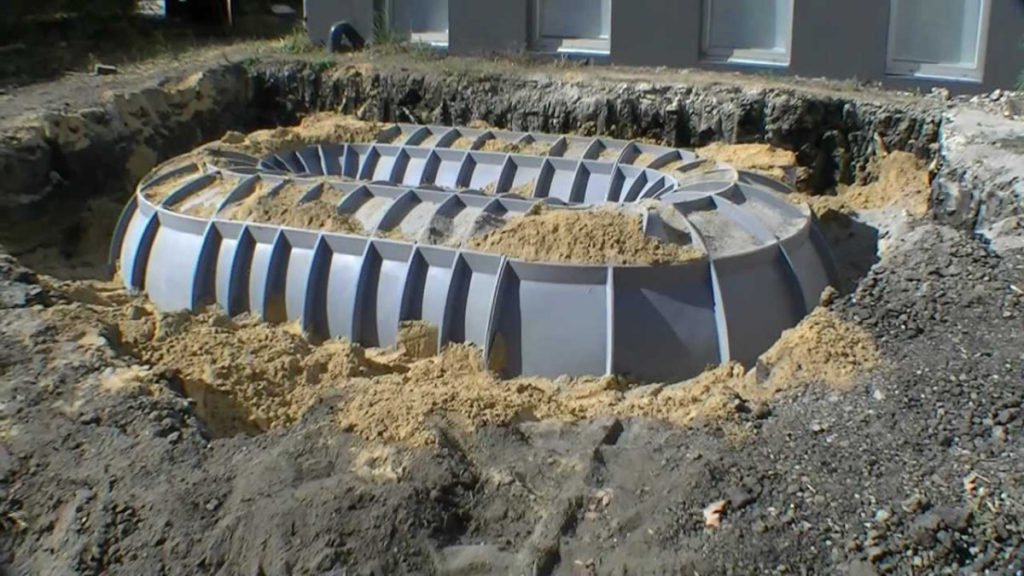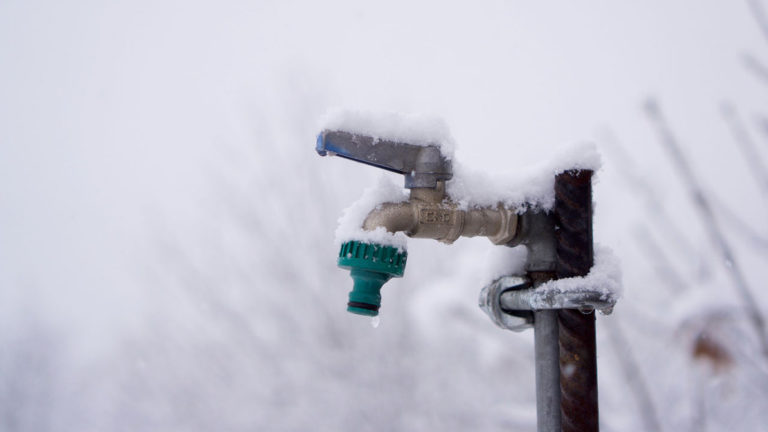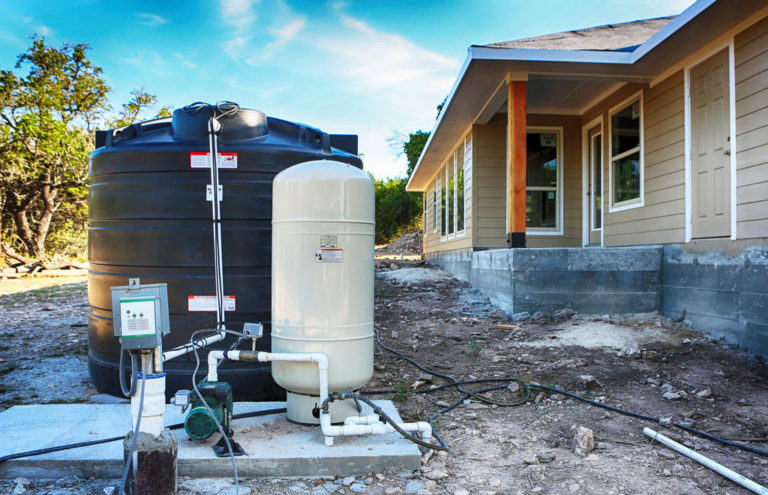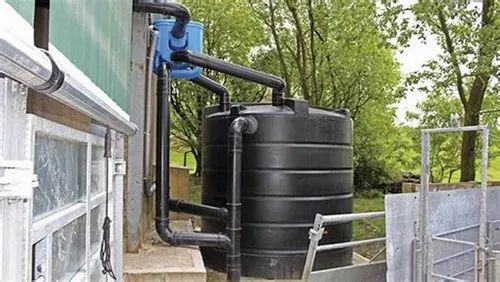Are you tired of relying on municipal water supplies that can be unreliable and costly?
Do you dream of having a self-sufficient homestead where you can grow your own food and collect your own water?
Then it’s time to consider building an underground cistern!
Not only will this investment provide you with a sustainable source of clean drinking water, but it can also increase the value of your property and help you save money on your utility bills.
We’ll dive into expert tips for designing and building an underground cistern that meets your homestead’s unique needs.
From choosing the right location to selecting the appropriate materials and design considerations, we’ve got you covered with practical advice and real-life examples.
So let’s get started on this exciting journey towards water independence!
Choose the right location
Look for a spot that is well-drained, not prone to flooding, and has a stable soil structure. Avoid areas with loose or unstable soil, as this can cause your cistern to collapse or leak.
Look for an area that is well-drained and not prone to flooding, as waterlogged soil can compromise the integrity of your cistern.
Avoid locations with loose or unstable soil, as this can cause your cistern to collapse or leak.
Instead, opt for a spot with a stable soil structure, such as a solid granite or clay base.
This will provide a firm foundation for your cistern and help ensure its longevity.
Make sure the area is level and free from debris, such as rocks or tree roots, which can interfere with the proper functioning of your cistern.
By choosing the right location, you can ensure that your cistern is safe, reliable, and effective in collecting and storing rainwater.
Determine the right size
Calculate your water needs and choose a cistern size that can meet them. Consider factors like the number of people in your household, your water usage habits, and the size of your property.
To determine the right size cistern for your home, it is essential to calculate your water needs and choose a size that can meet them.
The first step is to consider the number of people in your household and your water usage habits.
For example, a family of four may require more water than a single person household.
If you have a large property, you may need a larger cistern to accommodate the increased water demand.
Once you have an idea of your water needs, you can use the following formula to determine the right size cistern
Cistern size (in gallons) = (number of people x water usage per person per day) x (days between watering) / (effluent rate x storage duration)
For example, if you have a family of four and you water your lawn and garden for 30 days per month, and each person uses 50 gallons of water per day, you would need a cistern that can hold at least 600 gallons (4 x 50 x 30 / 10 x 30).
It is also important to consider the size of your property when choosing a cistern size.
A larger property will require more water, so you’ll need a larger cistern to meet your needs.
If you live in an area with water restrictions or limitied water availability, you may need to choose a smaller cistern to comply with local regulations.
Overall, determining the right size cistern for your home requires careful consideration of your water needs, usage habits, and property size.
By using the formula above and taking these factors into account, you can choose a cistern that provides enough water for your needs while also being mindful of your budget and local regulations.
Select the right materials
Choose materials that are durable, non-toxic, and resistant to corrosion. Common materials used for underground cisterns include concrete, plastic, or steel.
When selecting materials for an underground cistern, durability, non-toxicity, and resistance to corrosion are essential factors to consider.
Concrete, plastic, and steel are popular choices for underground cisterns due to their durability and resistance to corrosion.
Concrete is a versatile and durable material that can withstand harsh underground environments.
Plastic materials, such as polyethylene or fiberglass, are also suitable options as they are resistant to corrosion and have a long lifespan.
Steel is another popular choice as it is strong and resistant to corrosion, but it can be more prone to rust if not properly coated or protected.
It is important to choose materials that are compatible with the soil and water conditions of your location to ensure the cistern’s longevity and effectiveness.
It’s essential to consider the maintenance requirements and cost-effectiveness of each material before making a final decision.
Design for safety
Make sure your cistern is designed with safety in mind. Install a secure lid or cover to prevent accidents and contamination. Consider incorporating a ventilation system to prevent explosive gas buildup.
Design for safety: When it comes to designing your cistern, it’s important to prioritize safety to prevent accidents and contamination.
A secure lid or cover is a must-have feature to prevent unauthorized access and ensure that the cistern is safe for use.
For example, you can install a lid with a lock and key to prevent tampering, and consider using a cover that is heavy-duty and durable to withstand the weight of the water inside.
Moreover, to prevent explosive gas buildup, it’s important to incorporate a ventilation system into your cistern design.
This can include a series of vents or a dedicated ventilation pipe that allows gas to escape and reduce the risk of an explosion.
Proper ventilation can also help to prevent the growth of harmful bacteria and other microorganisms that can thrive in anaerobic environments.
In addition, consider the location of your cistern and its proximity to living spaces.
It’s important to locate the cistern in a well-ventilated area, away from areas where people may be present, to minimize the risk of explosions or contamination.
Proper design and implementation of a cistern can help to ensure a safe and healthy environment for everyone involved.
Use a proper filtration system
Install a filtration system to protect your cistern from debris and contaminants. This can include a simple screen filter or a more complex system that uses sand, gravel, and activated carbon.
Installing a proper filtration system is a important step in protecting your cistern from debris and contaminants.
There are various types of filtration systems available, ranging from simple screen filters to more complex systems that use sand, gravel, and activated carbon.
The type of system you choose will depend on the specific needs of your cistern and the level of contaminants you need to remove.
A screen filter is a basic and effective option that can remove larger debris such as leaves and branches.
However, it may not be sufficient to remove smaller contaminants like sediment and bacteria.
For more comprehensive filtration, you may consider a system that uses sand, gravel, and activated carbon.
This type of system can remove a wide range of contaminants, including sediment, bacteria, and chemicals.
It is important to choose a filtration system that is compatible with your cistern’s size and design.
A properly sized filtration system will help to ensure that your cistern remains clean and free-flowing, and that the water is safe for consumption.
It is important to regularly clean and maintain your filtration system to ensure its effectiveness and longevity.
By installing a proper filtration system, you can help to protect your cistern from contamination and ensure a safe and reliable water supply.
Make sure proper water proofing
Use a waterproofing membrane to protect your cistern from water seepage. This will help prevent leaks and extend the life of your cistern.
To ensure the longevity and efficiency of your cistern, it is important to implement proper water proofing measures.
Waterproofing membranes are designed to protect your cistern from water seepage, which can lead to costly repairs, leaks, and shorten the life of your cistern.
By applying a waterproofing membrane, you can effectively prevent water from penetrating the exterior walls and floor of your cistern, thereby extending its lifespan and minimizing the risk of costly repairs.
This membrane will act as a barrier against water infiltration, ensuring that your cistern remains dry and functional throughout its lifespan.
A waterproofing membrane can help to prevent the growth of harmful bacteria and algae, which can compromise the quality of your stored rainwater.
By prioritizing proper water proofing, you can enjoy a reliable and sustainable source of water for your home or business.
Install a pump and plumbing
Install a pump and plumbing system to distribute water throughout your homestead. Choose a pump that is reliable, efficient, and easy to maintain.
If you’re looking to irrigate your homestead and ensure a reliable source of water, consider installing a pump and plumbing system.
This will enable you to distribute water throughout your property, reaching all areas and crops, even in hilly or rough terrain.
When choosing a pump, look for one that is reliable, efficient, and easy to maintain.
A reliable pump will ensure that your water distribution system is functional at all times, while an efficient pump will save you money on your water bill.
A pump that is easy to maintain will save you time and resources in the long run.
Some key factors to consider when selecting a pump include its horsepower rating, flow rate, and energy efficiency.
A higher horsepower rating will enable the pump to lift water from greater heights and distances, while a higher flow rate will allow the pump to distribute water more quickly and efficiently.
Energy efficiency is also important, as it will help you save money on your electricity bill.
When it comes to plumbing, it’s important to choose the right materials for your system.
PVC pipes are a popular choice for homestead irrigation systems, as they are durable, easy to install, and resistant to corrosion.
Copper pipes, on the other hand, are more expensive but offer excellent durability and resistance to corrosion.
Overall, a well-designed pump and plumbing system can help you achieve optimal water distribution on your homestead, saving you time and resources while ensuring a healthy and thriving garden.
By choosing the right pump and plumbing materials, you’ll be well on your way to creating a reliable and efficient irrigation system for your homestead.
Maintain and monitor your cistern
Regularly inspect and maintain your cistern to ensure it’s working properly. Monitor water levels, check for leaks, and clean out any debris or sediment that may accumulate.
To ensure your cistern is always functioning optimally, regular maintenance and monitoring are essential.
Begin by inspecting your cistern regularly, looking for any signs of damage, leaks, or sediment buildup.
Check the water level and top it off as needed to avoid depleting the tank.
Also, clean out any debris or sediment that may accumulate over time.
This will help prevent clogs, blockages, and other issues that could disrupt your water supply.
Remember to check your cistern’s components, such as the gutters, downspouts, and overflow devices, to ensure they are clear and free from obstructions.
Want More? Dive Deeper Here!
Hey there! If you’re the type who loves going down the rabbit hole of information (like we do), you’re in the right spot. We’ve pulled together some cool reads and resources that dive a bit deeper into the stuff we chat about on our site. Whether you’re just killing time or super into the topic, these picks might just be what you’re looking for. Happy reading!






